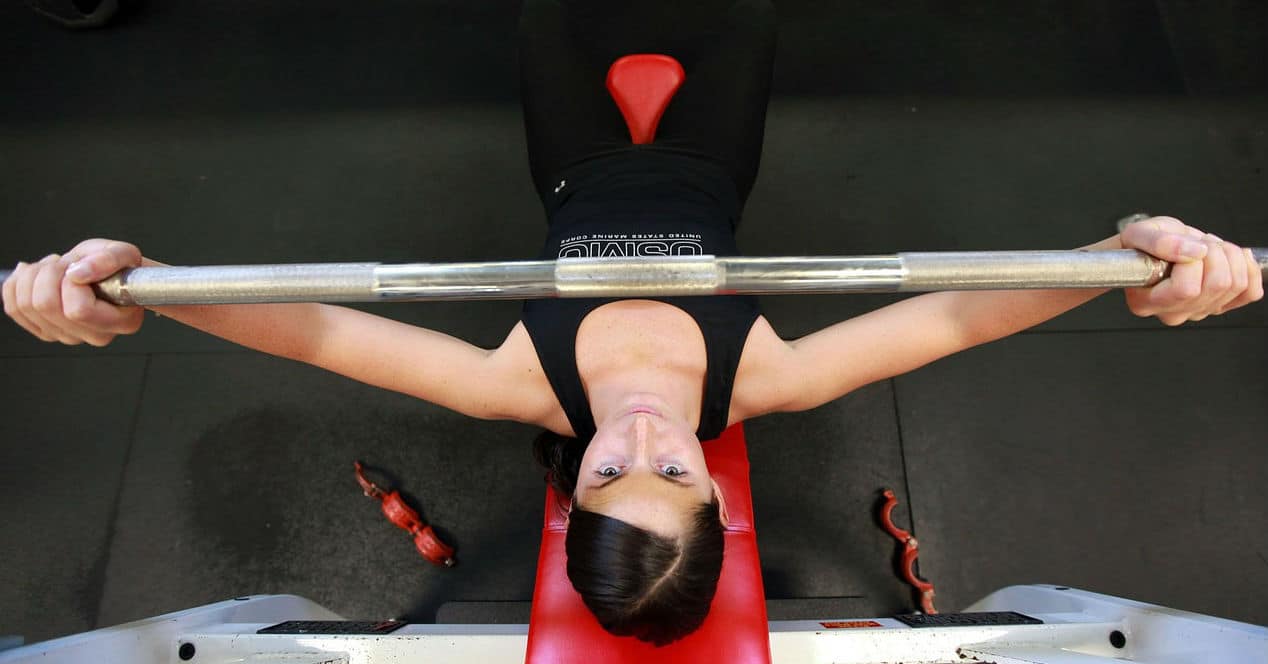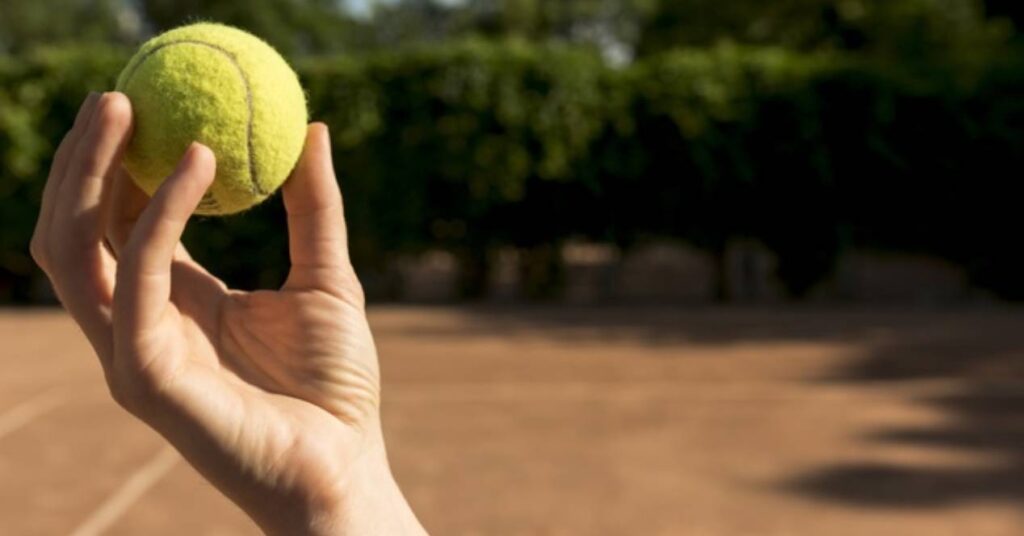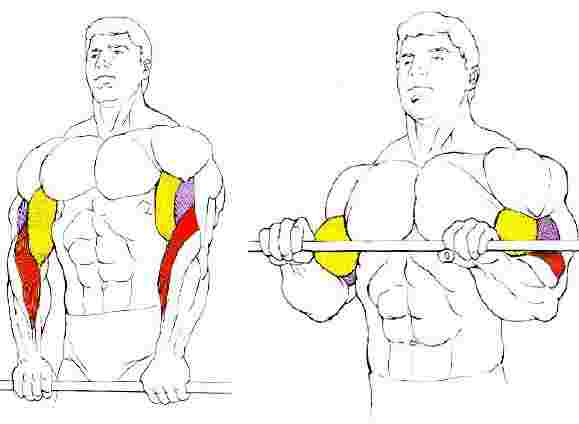
If you are a beginner in the world of fitness, it is normal to feel a little lost about the different techniques that await the exercises. The grip of dumbbells, bars and machines can modify the muscular work that you are going to do, so it is quite interesting that you know the different types of grips that exist.
This does not mean that by changing the type of grip we are working different muscles. The same ones are exercised regardless of the way of gripping, but the angle of the work will vary. In some grips we will involve a greater amount of muscle fibers and in others less.
What types of grips are there?
Depending on the grip you make while training, you can exercise your muscles at different intensities, in addition to varying the routine without breaking your head. There are four types to grasp: prone, supine, mixed and neutral.
Prone
We do it when we grab the bar or dumbbells with the palms of our hands facing down. It's quite an interesting grip for exercising the forearm, lats, trapezius, rowing, doing pull-ups... This grip is perfect for those who are new to strength training in general or starting to use a bar in training. It also helps build your forearm strength over time.
However, using this type of grip can lead to forearm fatigue sooner, so you will need to rest often. A wide grip is not recommended because we do not have full control of the bar. The close grip allows the thumb to prevent the possibility of the bar slipping out of the hands, especially during exercises where the weight is kept above the body (for example, during pushing movements).
A close overhand grip can be used for almost every lift we perform in the gym. For example, in the bench press, shoulder press, barbell squat, or for anything else. He is also good at barbell deadlifts, lower body movements with a barbell on the back, barbell rows, barbell and dumbbell reverse curls, seated rows, pulldowns, and pullups.
supine
Contrary to the previous grip position, we place the palms up. It is the most used to strengthen the biceps, back and deltoids, even to perform pull-ups in a simpler way. In the case of the bench press, a prone type can be used, but somewhat similar to the legs of a bulldog (semi turned in) to prevent the wrist from turning back and putting the weight on the fingers.
As we said before, this type requires more participation from the biceps. Although you may feel stronger and more confident in the movements, this position can put more strain on your biceps and the back of your shoulder. So you also don't want to do too many supinated exercises in a row.
Recommended for use on barbell rows, barbell curls, pulldowns, and seated rows.
Mixed or Alternate Grip
We are facing a combination of supine and prone grip, each hand with a different one. It is widely used to deadlift or bench press, in case you have to help someone. It can be a great option when you start to notice muscle fatigue and want to finish one more set.
As with the pushup, this type can give you a stronger grip on the bar, since it also works the biceps. It's perfect for heavier loads on exercises like deadlifts, but can be used on any pulling exercise as well.
Even so, you should keep in mind that over time, the mixed grip can cause muscle imbalances, unless you alternate the grip between the arms.
Neutral Grip (Hammer)
The palms of the hands are facing parallel. It is used mainly in dumbbells for exercises of openings, biceps or triceps. It becomes especially easy when the dumbbells are heavier, as it reduces the chance of the wrist turning downward, instead of staying straight.
Performing hypertrophy sets with a neutral grip can be a useful tool for those who are normally limited when bench pressing and trying to hit higher rep sets. In addition, as we said before, it is a grip that favors the growth of triceps and chest. The triceps can be targeted with this variation because of the added elbow flexion, but also, the chest can be targeted because of the stretch you can place on the pecs with a wider movement.
This grip is recommended for use in pull-ups, pulldowns, seated rows, dumbbell rows, dumbbell pressing movements including chest and shoulder presses, dumbbell hammer curls, dumbbell exercises where you hold weights at your sides, such as lunges , split squats, farmer's loads, and suitcase deadlifts. Also in any exercise that uses a trapeze bar, including deadlifts, rows, overhead press, and farmer's carries or lower body movements with a safety bar on your back, including squats, lunges, and split squats.
hook grip
The hook grip is a non-traditional grip that can be difficult to master at times, but could produce great results in terms of lifting. It is similar to an overhand grip, but the thumb is placed under the index and middle fingers. The benefits of this grip are similar to those of the alternate grip. Prevents the bar from slipping out of the hands due to the location of the thumb and fingers. This makes it an ideal grip for heavy, explosive moves like the clean and snatch.
This type of grip can make an improvement in the ability to grip the bar, although it may not be enjoyable for all athletes. During the first weeks it can cause discomfort; however, as days go by you can achieve a better Olympic lift. Greater control of the bar is felt in the hands, and there is less concern that the bar will fly out of the hands when the weight becomes challenging. If we are able to overcome the discomfort in the first training sessions, it will be worth the change.
The hook grip can be used for almost any exercise as it is similar to the overhand grip. For example, in clean and jerk, pull-ups or deadlifts.
bulldog grip
The bulldog grip, named for its resemblance to a bulldog's feet when standing, is a style of grip that places the bar lower in the palm of the hand to optimize pressing potential.
The key elements of wrist position in pressing movements are the bar sitting on the flesh of the palm, directly over the radius bone, and the wrists stacked above the elbows.
This type of grip has a higher power force. To generate the greatest amount of force, the resistance we are working against should be as close to the lever as possible. In other words, moving the bar more towards the midline of the forearm gives us more leverage, which allows you to use your force better.
By moving the bar deeper into the palm of the hand, the same vertical alignment that increases potential power output also reduces the risk of injury. Stacking the resistance on top of the joint, rather than behind it, should the wrists be extended too far, we will reduce the amount of shear stress placed on the tissues. This can help prevent acute injuries and/or chronic stress buildup.
It is recommended to avoid using it on heavy singles or max attempts before we are sure to use it. First we will test with light loads and with enough repetitions.
false grip
The false grip is also known as suicide grip, but it will not put our life in danger if we use it correctly. It's similar to an overhand grip with one big difference: no thumbs. Using a thumbless grip reduces the amount of wiggle room the wrist can flex forward or backward, otherwise the bar could fall out of the hands. To avoid this, we must keep the bar at the base of the palm of the hand with the wrist stacked directly on the forearm.
Despite its disconcerting nickname, this grip is often used by more experienced lifters for pulling movements, and it's a staple for gymnasts. The suicide grip is too risky to use on the bench press, but it's good for the overhead press because it helps guide the bar's trajectory more effectively.
It can also be implemented during squats, but lifters experiencing elbow pain should wrap their little fingers under the bar rather than over it. No matter what, it's important not to let your hands bend too far back.
There are some suicide grip configuration tricks that should not be overlooked if we want to maximize security:
- Always use a partner to disassemble and reassemble.
- We'll make sure the bar isn't slippery. We will use chalk, if necessary.
- Place the bar on the midline of the palm of the hand, not on the tips of the fingers.
- Actively squeeze the bar with all five fingers throughout the lift.
- Engage forearms to minimize extension wrist drop.
- Keep your torso and hip position solid and stable.
pistol grip
Of all the grips people use in the gym, the pistol grip is the least likely to see. It actually reduces the amount of weight we can lift. It's hard to think of many situations where this would be advantageous, but it can actually be very useful.
Many lifters complain that they can't feel their lats activate during pulldowns and rows. This is because they use too much weight, too much momentum, and do their reps too fast. They may also have a weak mind-muscle connection.
When using the pistol grip, we are required to use less weight and do the reps much slower usual. If we don't, the bar will probably slip out of hand. This helps keep the tension on the lats and we should start to feel like they are working more. This strengthens the mind-muscle connection, which studies show is crucial for muscle growth and strength.
We don't have to use the pistol grip for every set of training. We can use it only during the warm-up series to help awaken the muscle-mind connection.
Crush Grip
The Crush grip is the grip between the fingers and the palm. A typical example of this would be if we closed our hand as hard as we can. This is the smash motion. If we are already a regular at the gym, training the crush grip is very easy. We can make some adjustments to the training and increase the grip in a relatively short period of time.
On deadlift days, we can add short grips to the end of the lift. It's best to use a double overhand grip while warming up and leave the straps loose as long as possible. This applies to rows and lat pulldowns.
One of the best favorite ways to develop the crush grip is by using a rolling handle. Basically a one handed deadlift with a thick handle that rotates, sounds great. Crush grip is worn all day every day. Whether it's opening doors, driving a car or shaking hands with a colleague.
clean grip
The clean grip is considered common and is demonstrated by wrapping the fingers around the bar in a pronated position, followed by the thumb resting on the back of the fingers. This finger position is considered to develop the greatest hand strength, but is less effective for securing heavier weights than the hook grip.
The clean grip snatch can be used for a number of reasons, such as a fuller, more aggressive pull, improving rotational force, and a focus on maintaining close proximity of the bar to the body. It can also be used simply for variety, as a way to break up the monotony common in weightlifting training.
Integrate different grips into your routines
The ideal is to vary your grip to work the muscles from different angles. Always try to think about how to strengthen the inner and outer face of your muscles, so you will increase your strength and get better results.
For example, in the case of overhand grip pull-ups, target the rhomboids and latissimus dorsi for muscle growth. This grip also puts stress on the forearms, shoulders, and biceps as stabilizers. Instead, the grip bench press emphasizes the biceps. In fact, by keeping your forearms perpendicular to the ground, you can target your biceps directly. For this specific training emphasis, stop in the lowering phase when your upper arms reach parallel to or just below the ground. When performing chin-ups for the back, fully contract each rep by squeezing your elbows back and out.
Switching between different hand grips is ideal for creating muscle growth stimulation, adding resistance, and improving movement, both isolation and compound movement of various muscles. You will find exercises where you can always use the same hand position, but you can also play with the width. Depending on the distance of your hands, it can be a closed, wide or very wide grip (in the case of exercises with bars).
Exercises to strengthen the grip of the hands
Beginners and more experienced alike need to strengthen their grip. These exercises will help you grip the bars and dumbbells with more force, preventing them from slipping out of your hands when you lift a lot of weight. Also, practicing the grip helps prevent injury. Despite not being well known, injuries to the palm of the hand and wrist are very common.
Here are the best techniques to make your grip stronger and perform better in each workout.
Use the tweezers or hand strengthener
Using a hand gripper to build grip strength with exercises that require repeated squeezing and releasing can be very beneficial. Start by turning the knob to adjust the resistance. There are several ways to position the manual clamp, including:
- Place your thumb on one side of the clamp and your index and middle fingers on the other; then squeeze.
- With the forceps face down, place the palm of the hand on one side and the little and ring fingers on the other; then squeeze.
- Squeeze with thumb and forefinger only.
- Squeeze with thumb and middle finger only.
- Push with your thumb only, with the other four fingers wrapped around the bottom shank of the handle. Then reverse the grip and perform the exercise with all four of your fingers wrapped around the top.
- Place the grip inside one hand and squeeze for a full hand exercise; then reverse the grip into your hand with the opposite side of the gripper facing up.
elastic band exercise
Wrap a rubber band around your fingers; then open and close your hand as many times as possible. You can do this exercise anywhere, including at your work desk or at home while watching a video. It is important that you do not fatigue the muscle, especially if you are not used to exercising regularly.
As you notice that the resistance of the band becomes lighter, you can choose a thicker one or one with more resistance. In case you don't have several, you can also shorten the length of it to make it more complicated.

Squeeze a tennis ball to improve grip
Hold a tennis ball and squeeze it as many times as you can. Rest for 90 seconds; then continue squeezing. It's a pretty good grip-improving exercise. Many times we have heard that squeezing a small ball can reduce our stress level. Now we know one more benefit of this simple movement.
The bigger the ball, the more difficult it is. You can even hang them from the ceiling to support your weight by hand. There are specific balls for this, not just any type.
Fingertip push-ups
Perform a normal pushup, except instead of your hands being flat on the ground, use only the pads of your fingers as the point of contact. Complete as many fingertip pushups as you can.
Logically, it is not a recommended exercise for beginners in strength training. You can start doing these fingertip pushups on a wall, and work your way down as you feel more confident. You can also rest your knees on the ground, although you have to be careful not to injure your fingers.
wringing out of the cloth
Wet a small towel or washcloth, then wring out the water with both hands. Repeat this movement many times. It is a good and totally affordable exercise to do at home or in the field. You will notice that the more you do it, the more tired your hands become; especially the inside of the thumb. That muscle is essential to get a firm grip.
In addition, this exercise can then be used in other facets, such as doing pull-ups while holding onto a towel to improve grip. It will be easier by preventing your fingers from slipping, although you will also have to get used to that new grip.

